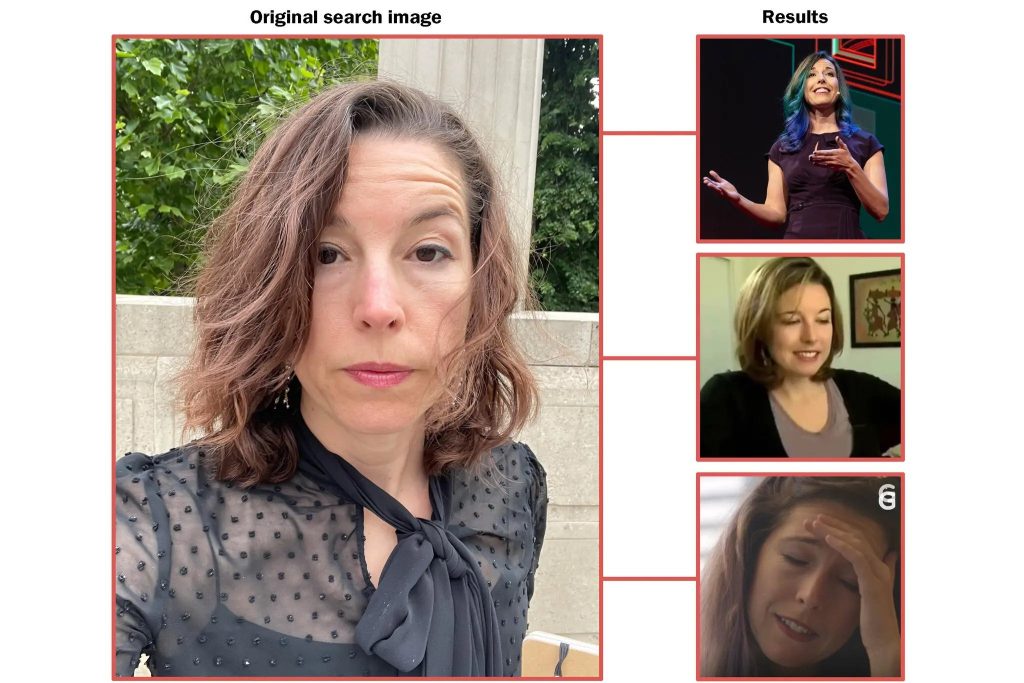PLUS: a new face search engine anyone can use is alarmingly accurate
BY:
Eric De Grasse
Chief Technology Officer
PROJECT COUNSEL MEDIA
27 May 2022 – The article “Data Intelligence Startup Near, with 1.6B anonymized User IDs, Lists on NASDAQ via SPAC at a $1B Market Cap; Raises $100M” tells an interesting story. On one hand, in the midst of some financial headwinds, the outfit Near is a unicorn. That’s exciting for some. The most significant part of the short item is this passage. Near offers:
anonymised, location-based profiles of users based on a trove of information that Near sources and then merges from phones, data partners, carriers and its customers. It claims the database has been built “with privacy by design.”
The word merging as in “merging data from different sources” is not jargony enough. The Near write up uses the term “stitching” as in “threads which hold the parts of a football together.” I prefer the term “federating” as in “federating data”.
The idea is a good one. Take information from different sources, index it (assign tags today, of course) and group information about a person under that entity’s “name.” This is a useful workflow, and my hunch is that the system works best for individuals leaving digital footprints and crumbs of ones and zeros behind as these “entities” go about their business.
The successful merging and profiling will give Near a competitive advantage. Like ClearView and many other companies, scraping and licensing commercial datasets can produce a valuable data asset.
On the downside, as ClearView has learned as it explained its business to legal eagles, some concerns for privacy can arise. Assurances of privacy have created some issues for firms performing similar work for government agencies. Law enforcement and intelligence professionals are likely to show some interest in Near’s products and services. But this genie is long out of the bottle (see below).
Successfully navigating marketing to commercial outfits and selling to government agencies is like sailing into an unfamiliar port with a very large boat.
Kudos to Near for its funding. Now it will be interesting to watch the firm’s management walk the marketing tightrope over the Niagara Falls of cash flow as legal eagles circle.
Meanwhile …
PimEyes
We have written about this company before but now mainstream media is grabbing onto the story. PimEyes is an online face search engine that goes through the Internet to find pictures containing given faces. PimEyes uses face recognition search technologies to perform a reverse image search. Find a face and check where the image appears online.
The New York Times has a very good overview which you can read by clicking here. A few paragraphs from the article:
For $29.99 a month, a website called PimEyes offers a potentially dangerous superpower from the world of science fiction: the ability to search for a face, finding obscure photos that would otherwise have been as safe as the proverbial needle in the vast digital haystack of the internet.
A search takes mere seconds. You upload a photo of a face, check a box agreeing to the terms of service and then get a grid of photos of faces deemed similar, with links to where they appear on the internet. The New York Times used PimEyes on the faces of a dozen Times journalists, with their consent, to test its powers.
PimEyes found photos of every person, some that the journalists had never seen before, even when they were wearing sunglasses or a mask, or their face was turned away from the camera, in the image used to conduct the search.
PimEyes found one reporter dancing at an art museum event a decade ago, and crying after being proposed to, a photo that she didn’t particularly like but that the photographer had decided to use to advertise his business on Yelp. A tech reporter’s younger self was spotted in an awkward crush of fans at the Coachella music festival in 2011. A foreign correspondent appeared in countless wedding photos, evidently the life of every party, and in the blurry background of a photo taken of someone else at a Greek airport in 2019. A journalist’s past life in a rock band was unearthed, as was another’s preferred summer camp getaway.
Unlike Clearview AI, a similar facial recognition tool available only to law enforcement, PimEyes does not include results from social media sites. The sometimes surprising images that PimEyes surfaced came instead from news articles, wedding photography pages, review sites, blogs and pornography sites. Most of the matches for the dozen journalists’ faces were correct.
Boys and girls, all these powerful technologies are coming more and more into the realm of the everyday. And they’ll become routine for police forces and others. This genie is long out of the bottle.

